HAROON GUNN-SALIE
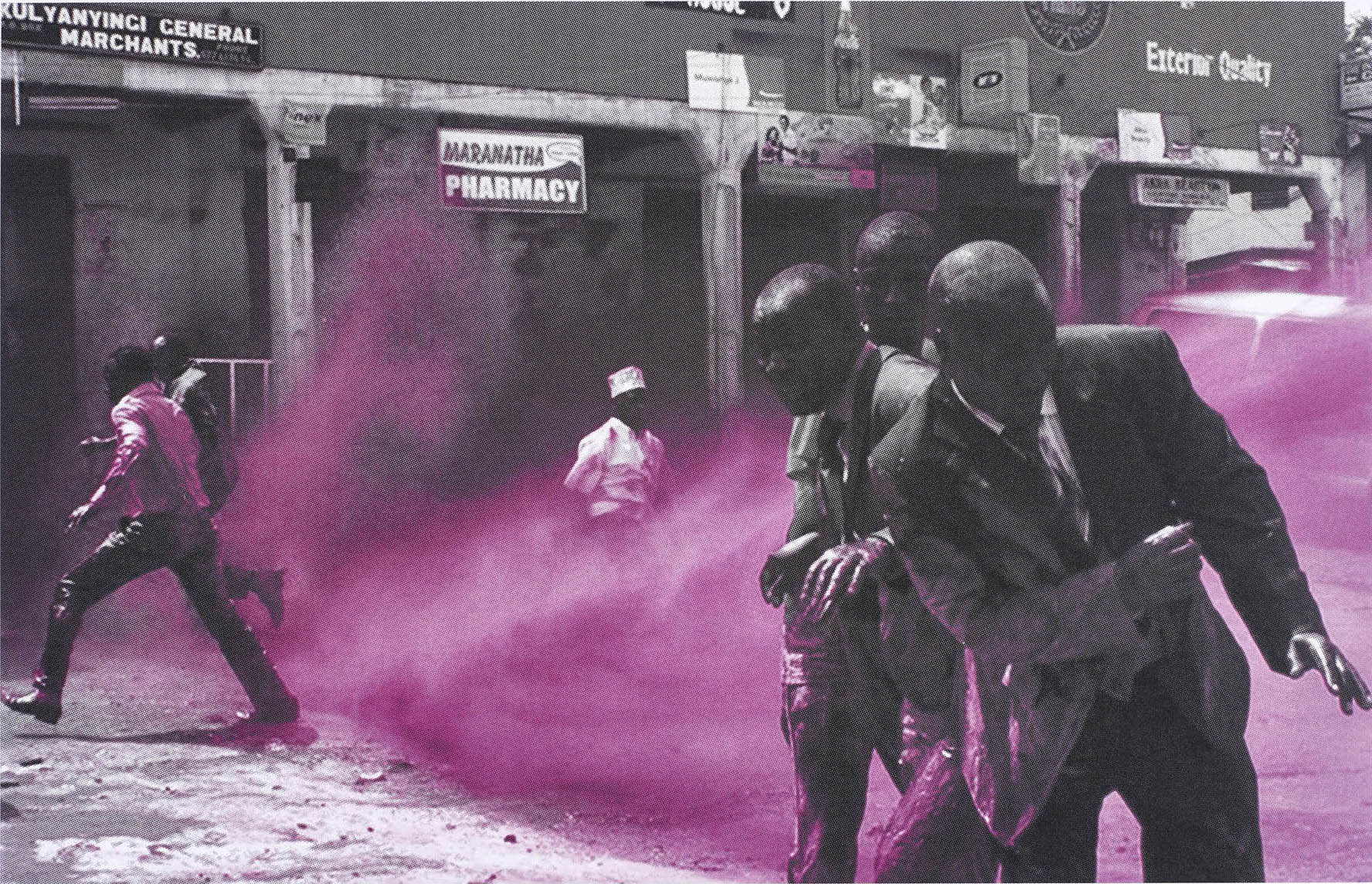
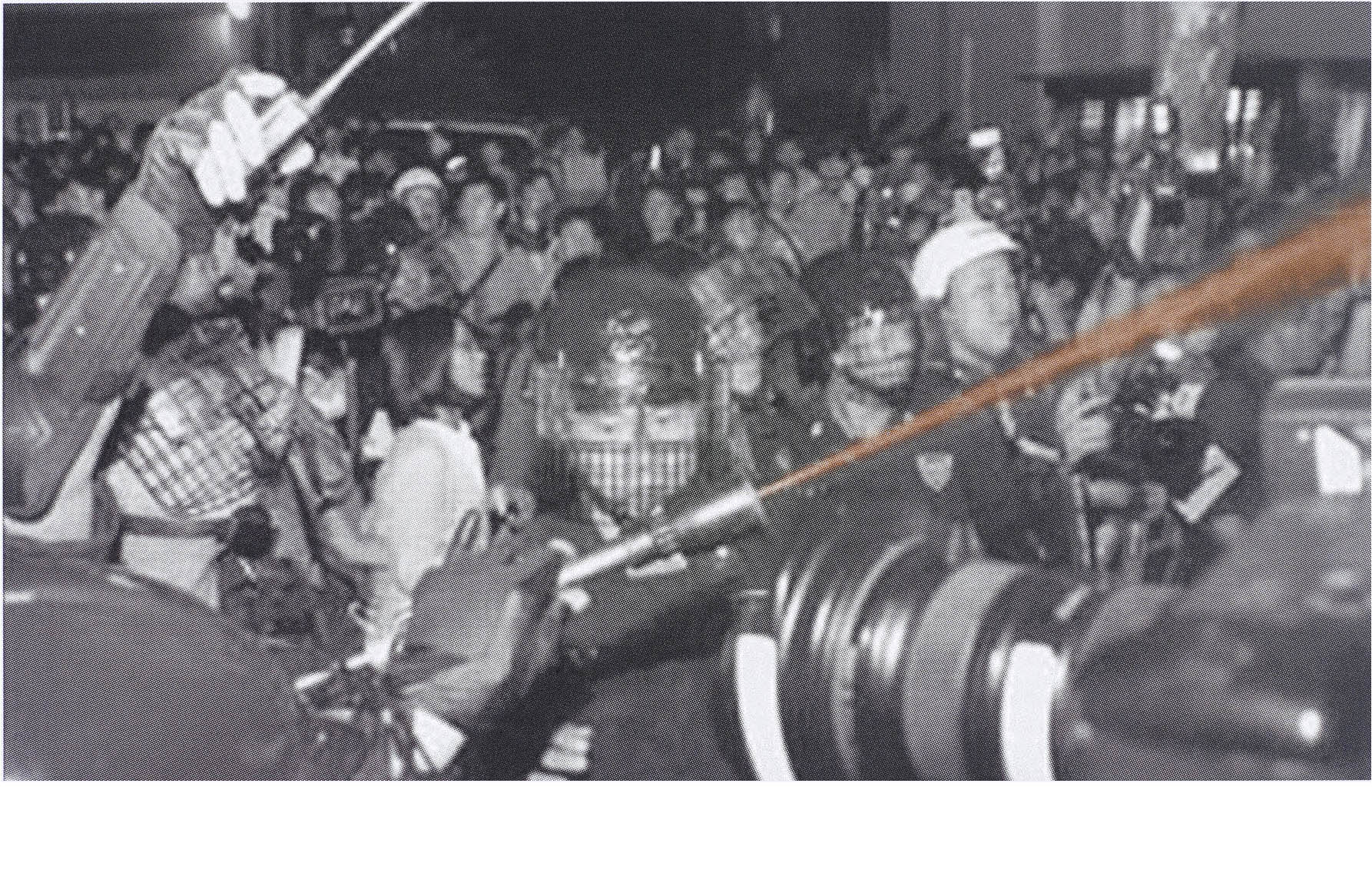
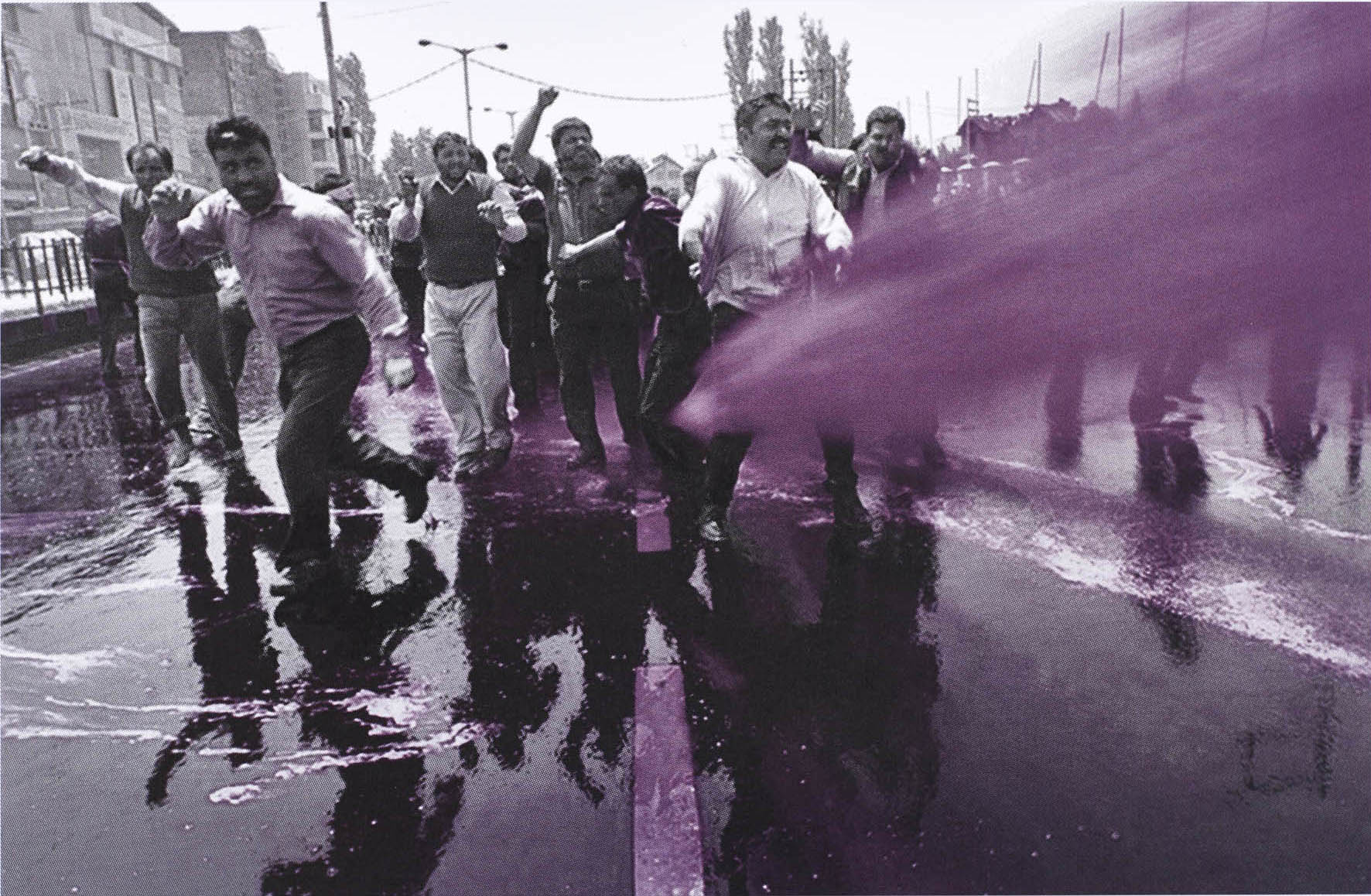
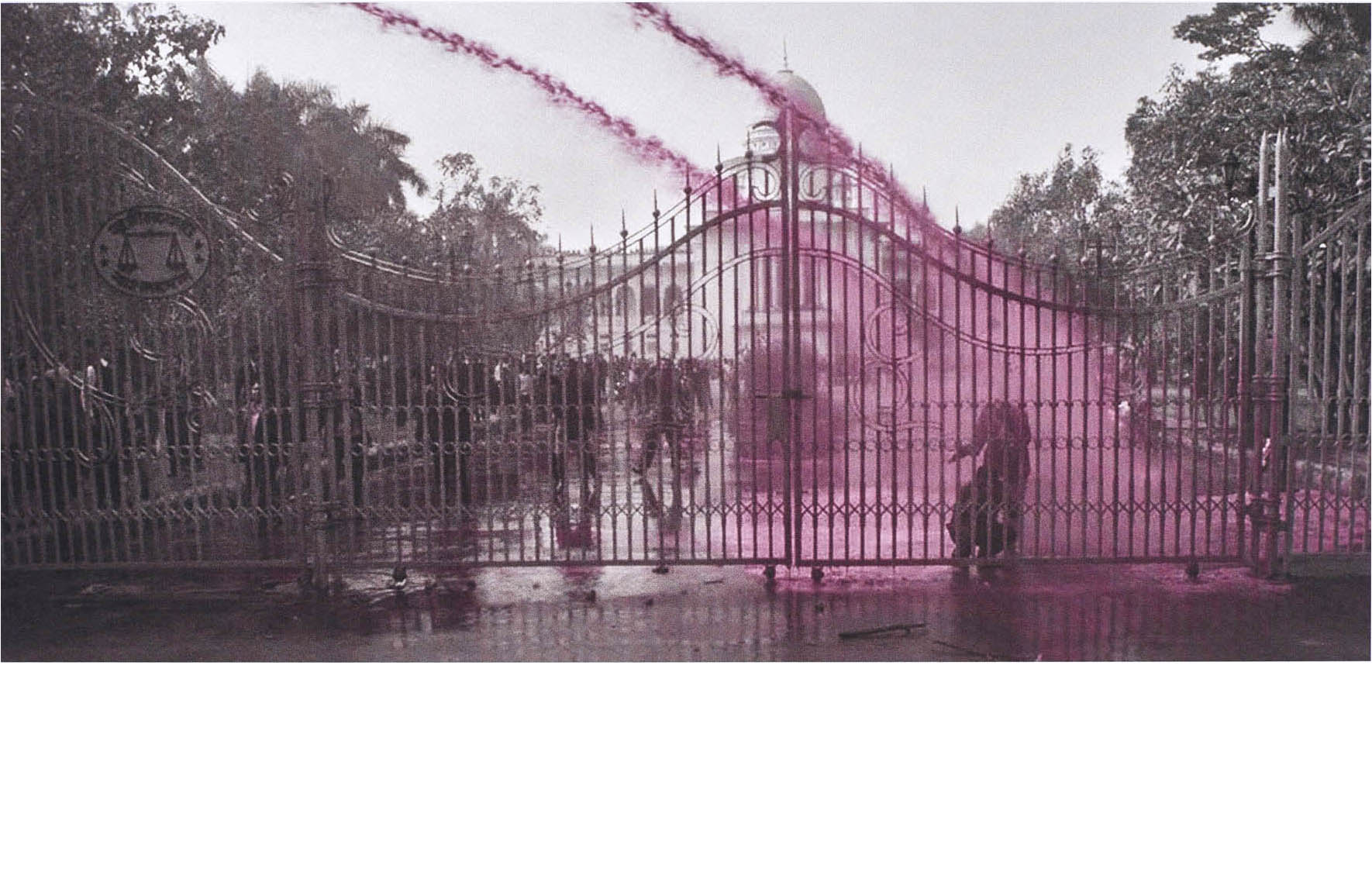
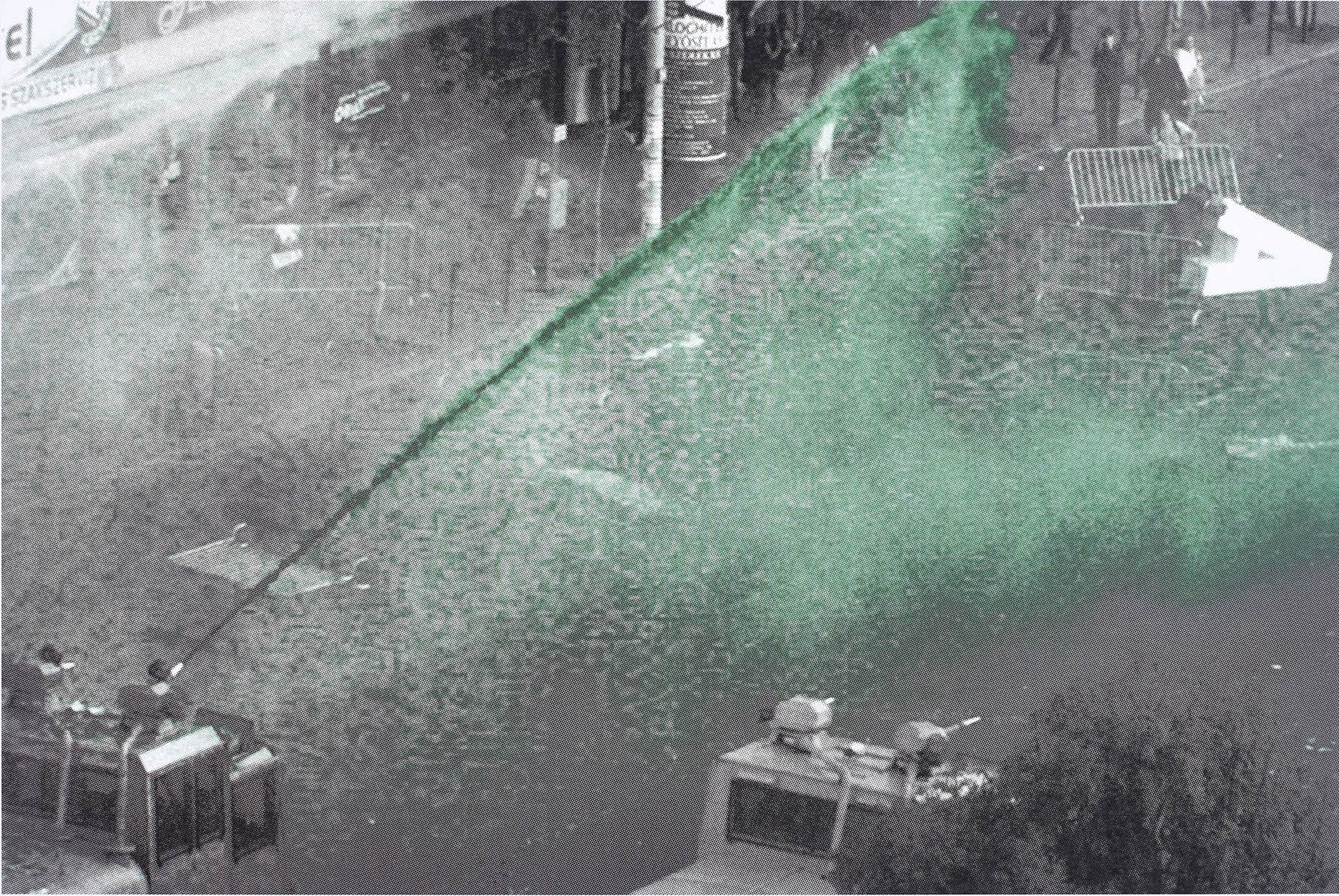
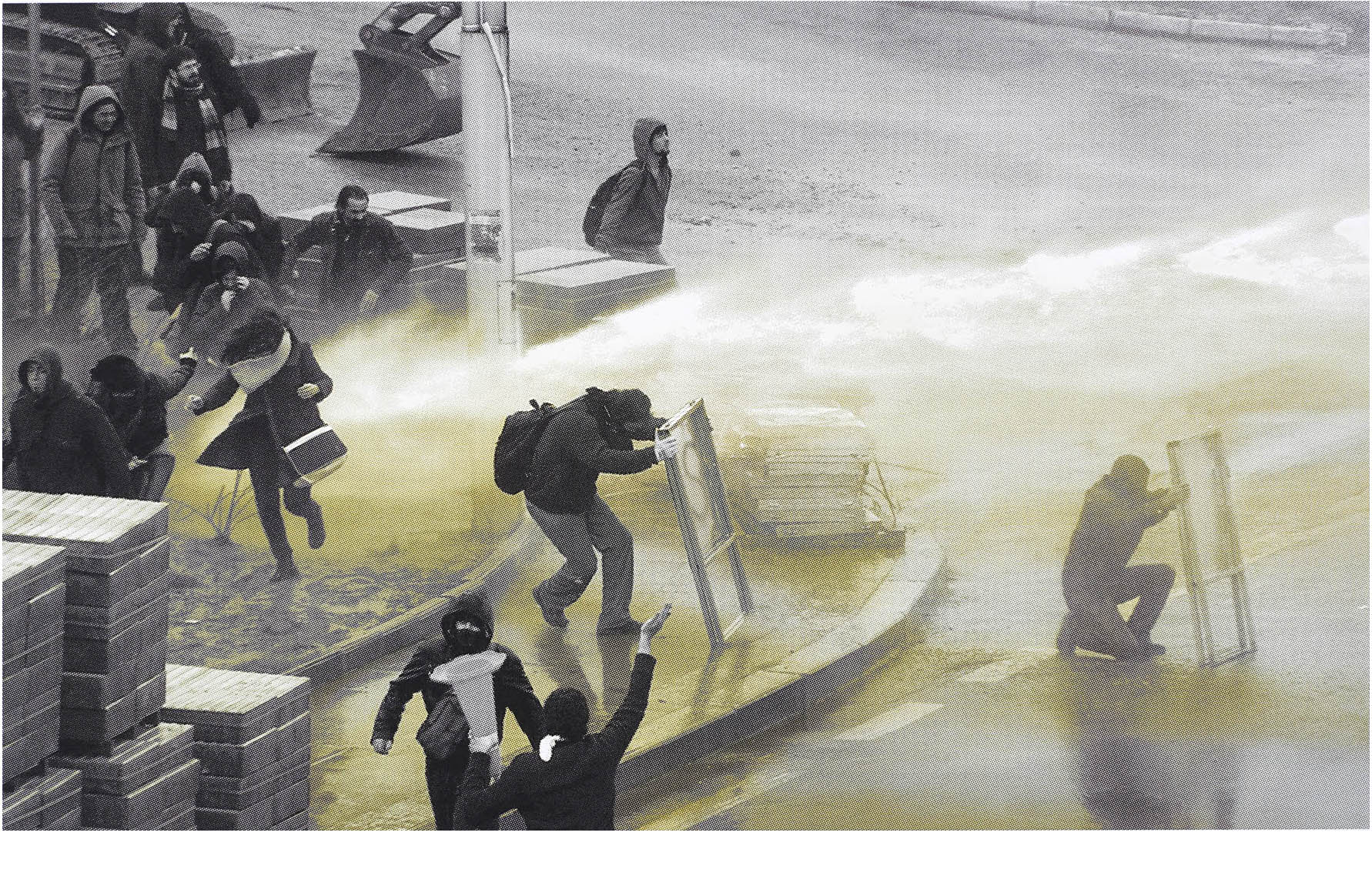
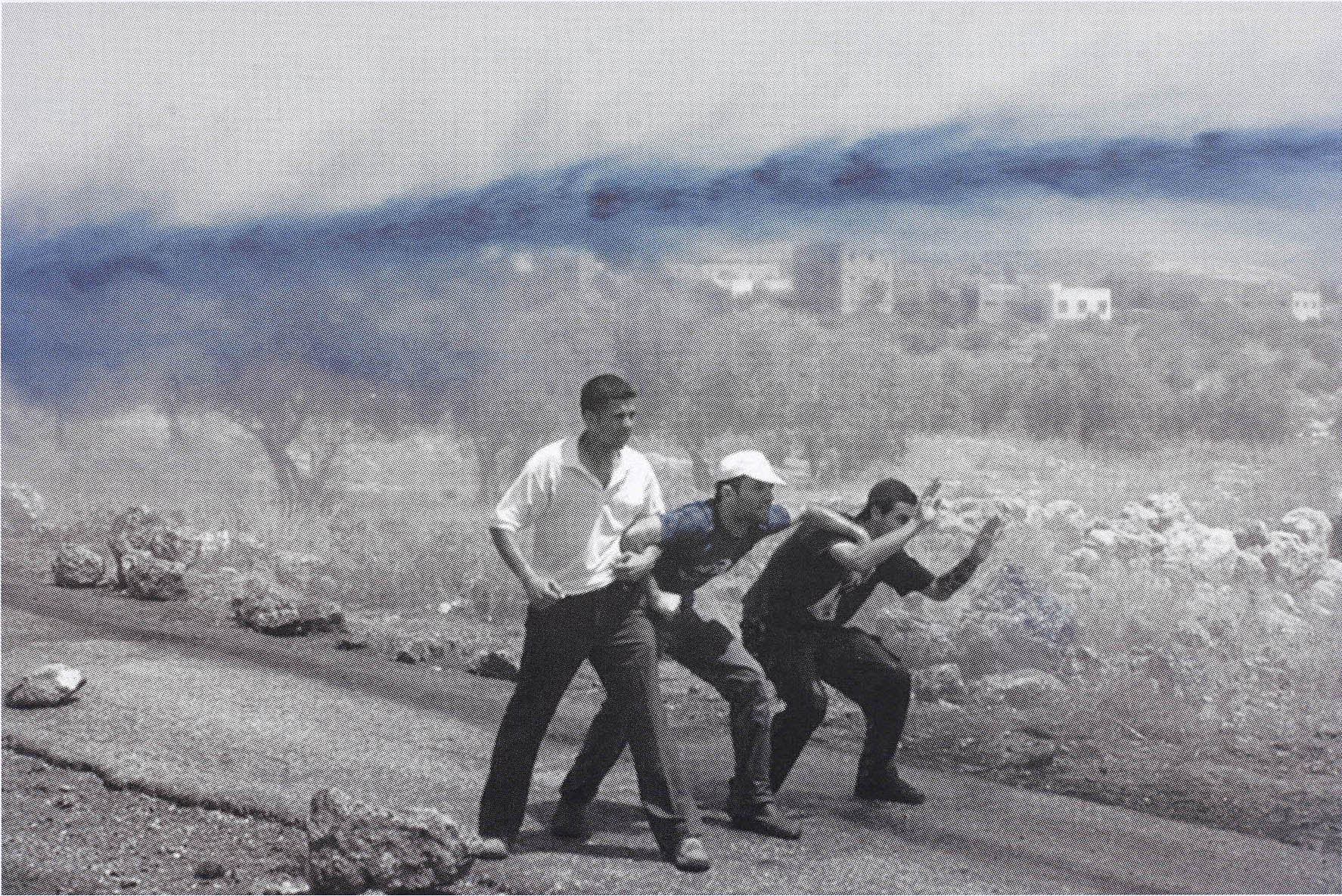

History after apartheid I História depois do apartheid
A série de litografias de Gunn-Salie aborda o uso pelas forças de segurança do apartheid de tinta roxa dispensada por canhões de água sobre veículos blindados para marcar, identificar e prender os manifestantes que participam de marchas e manifestações pela democracia em massa. Esta imagem de pessoas manchadas de roxo fugindo da polícia tornou-se iconográfica do movimento de libertação contra o apartheid. Um evento simbólico próximo ao fim da segregação foi o Purple Rain Protest em 2 de setembro de 1989, na Cidade do Cabo. O primeiro canhão d’água montado em um caminhão foi usado para controle de distúrbios (manifestações/motins) na Alemanha nazista, no início da década de 1930. As forças de segurança do apartheid apropriaram-se dessa técnica adicionando corante a água, e imagens de manifestantes saturados e marcados pelas cores dos canhões existem em todo o sul global hoje. Na Índia, utilizaram tinta roxa como na África do Sul. A polícia de Uganda marcou os líderes da oposição que protestavam de rosa luminoso; a polícia húngara utilizou uma combinação de azul e verde para dispersar uma manifestação pró-socialista no centro de Budapeste; na capital da Turquia, Ancara, os professores que marchavam sob a bandeira da “educação secular e respeito pelo trabalho” foram jateados de cor amarela pela força de segurança; a polícia israelense usou azul cerúleo brilhante para identificar atiradores de pedra palestinos em Bil’in; e na Coreia do Sul os manifestantes que marchavam contra a visita do presidente dos Estados Unidos, George W Bush, a Seul foram iluminados com um tom laranja antes de serem carregados em massa por veículos da polícia.
haroon-gunn-salie
África do Sul
History after apartheid is a major installation, a body of two-colour lithographic prints, and a film. The work addresses the apartheid security forces’ use of purple dye dispensed from water cannons on armored vehicles to mark protesters attending mass democracy marches and demonstrations, to identify and arrest those in attendance. This image of purple-stained people fleeing police has become iconographic of the mass liberation movement against apartheid. A symbolical event towards the end of apartheid was the “Purple Rain Protest” on 2nd September of 1989 in Cape Town. As the march approached South Africa’s Parliament, a police water cannon with purple dye hosed thousands of Mass Democratic Movement supporters. The first truck-mounted water cannon was used for riot control in Nazi Germany at the beginning of the 1930s. The apartheid security forces re-appropriated this technique adding dye to the water stream and similar images of saturated indelibly marked protestors exist throughout the global-south today. In India, pro-democracy protesters were blasted with purple dye as in apartheid South Africa; Ugandan police marked opposition leaders who were protesting in luminous pink; the Hungarian police used a combination of blue and green to disperse a pro-socialist demonstration in central Budapest; in the Turkish capital, Ankara, teachers who marched under the banner of “Secular education and respect for work” were colored bright yellow by the security forces. Israeli police used bright cerulean blue to identify Palestinian stone-throwers in Bil’in, and in South Korea protesters who marched against US President George W. Bush’s visit to Seoul were illuminated in an orange hue before being carried off in police vehicles en-masse.

